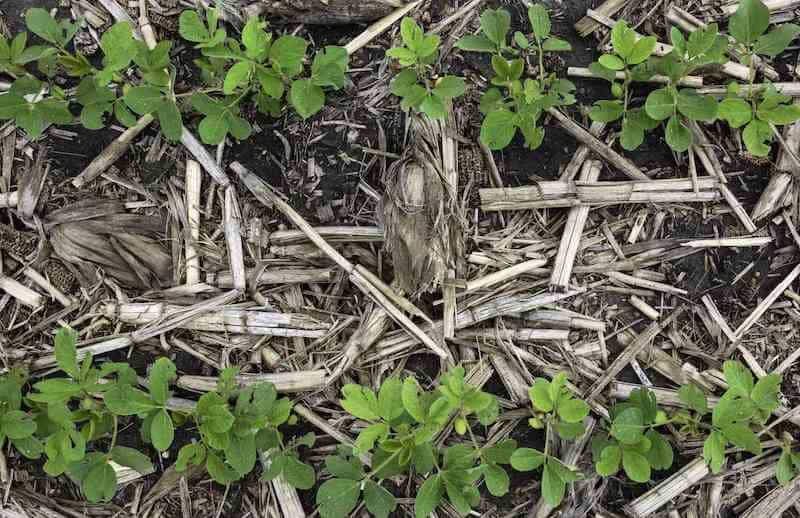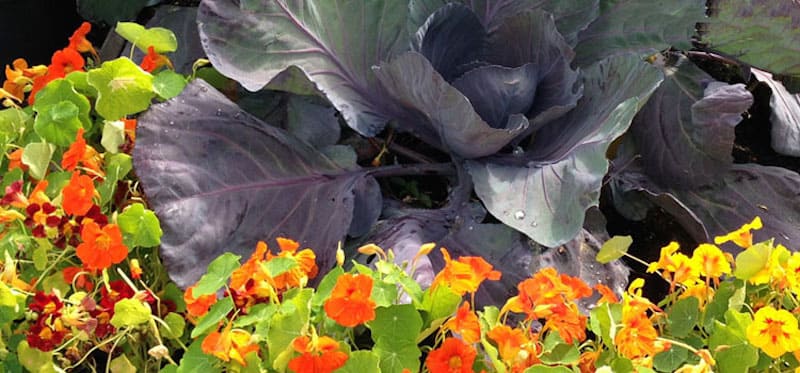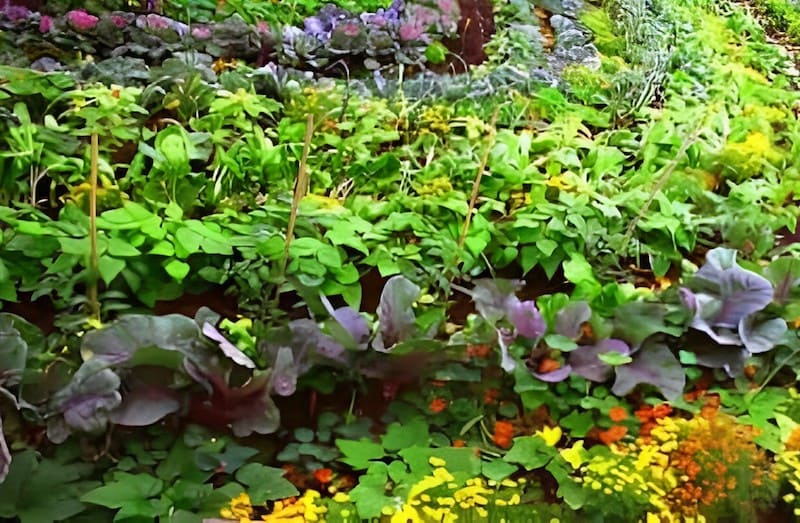
The philosophy of sustainable agriculture lies in a resolute commitment to preserving natural resources and using them judiciously. This agricultural approach serves as a blueprint for sustainable agriculture, aiming to uphold the natural balance and alleviate the stress on Earth's resources. In line with the vision of the farm as a cohesive, interconnected system, no-till farming seeks to foster a cyclical process where the majority of inputs are generated within the farm, thereby curtailing the dependence on external resources. This signifies a noteworthy step towards more self-sufficient and sustainable agriculture.
One key aspect of this resourceful strategy is the focus on waste reduction. No-till farming, as an essential part of sustainable agriculture, accentuates the practice of composting and recycling, effectively turning what would conventionally be considered waste into useful resources. By reintegrating organic materials back into the soil in the form of compost, waste is not only minimized but the soil's fertility and health are also amplified, enriching it with a wide spectrum of beneficial microbes and nutrients. This cyclical system markedly reduces the environmental impact of the farm, thereby promoting a more sustainable form of agriculture.
Water, a resource of ever-increasing scarcity yet undeniable value, is treated with immense consideration in no-till farming. A deep-seated appreciation of water's crucial role prompts many sustainable farms to adopt practices that maximize water usage efficiency and preservation. This includes strategically designing landscapes to gather and retain rainwater, and incorporating irrigation techniques that curtail water wastage, demonstrating a deep respect for this vital resource.
For instance, numerous sustainable farms use methods like drip irrigation, which meticulously delivers water right to the plant roots, significantly curtailing water waste. In a similar vein, rainwater harvesting is frequently employed as a method to collect and store water for future use, thereby enhancing the farm's resilience in drought-prone times. By adopting these water-conserving practices, no-till farming showcases a responsible, enlightened approach to managing natural resources. Through its application, it represents a vision for agriculture that is not solely about food production, but equally about nurturing and safeguarding the vitality and health of our planet.

In its quest for sustainable agriculture and reverence for the earth, sustainable farming often incorporates the no-till farming approach, a method known for its emphasis on soil conservation. This technique is fundamentally different from conventional plowing, which disrupts the soil structure. Instead, no-till farming aims to leave the soil undisturbed, thus maintaining its integrity, enhancing water retention capabilities, and promoting the proliferation of soil biodiversity.
Under no-till farming, the soil remains largely untouched, creating a favorable environment for a host of soil organisms. From earthworms and beneficial insects to a plethora of microorganisms, these soil inhabitants play an invaluable role in enhancing soil fertility and health. Their activities contribute to nutrient cycling, pest suppression, and the formation of stable soil aggregates, which improve soil structure and increase its capacity to hold water. These factors, in turn, create a nurturing environment for plant roots, which can grow uninterrupted in the undisturbed soil, further improving soil stability and function.
The implementation of no-till farming in sustainable farm systems is a testament to the approach's emphasis on working with, rather than against, nature's inherent rhythms. By preserving the soil's structure and promoting its natural ecosystem, no-till farming fosters a soil environment that is capable of supporting healthy plant growth without the need for chemical inputs. This method demonstrates how sustainable farming is not just a system of food production, but a philosophy that seeks to enhance the overall health of the environment while producing nutritious and sustainable crops.
Soil fertility is a focal point in sustainable farming. A diverse array of practices, including the use of biodynamic compost and various soil amendments, are employed to improve the physical properties of the soil and to nurture a vibrant, healthy soil ecosystem. Biodynamic compost is a high-quality compost produced using specific preparations and techniques. It is rich in nutrients and microbial life, aiding in soil health and crop nutrition.
Crop diversity is another cornerstone of no-till farming. Tending crops growing in an undisturbed soil system balances an ecosystem building soil health. Sustainable farms often feature complementary plantings - plant species that benefit each other when grown together, either by improving soil health, attracting beneficial insects, or deterring pests. Perennial crops are also commonly grown for their ability to improve soil structure, sequester carbon, and provide habitat for beneficial organisms.

Animals play a crucial role in biodynamic farms. They are integrated into the farm organism, providing manure for compost, helping manage pests, and contributing to the overall diversity and balance of the farm. Animal welfare is highly prioritized, with livestock managed in a way that respects their natural behaviors and needs.
Biodynamic farming is an exceptional model of sustainable agriculture. By treating the farm as a self-sufficient organism and aiming for a harmonious balance between all its elements, it creates a resilient, productive system that can endure over the long term. Biodynamic farming combines a deep respect for the earth and its natural rhythms with practical, holistic farming practices, paving the way for a sustainable future in agriculture.
Biodynamic farming fundamentally challenges the notion of a standardized agricultural model. Instead, it upholds the principle of farm individuality, recognizing that each farm holds a unique set of attributes and conditions. This concept extends beyond simple geographical differences, embracing the distinct characteristics of a farm such as its climate, soil type, local biodiversity, and even the inherent energy of the land.
This individualistic approach propels the creation and development of farming practices that are attuned to these unique characteristics. Instead of imposing a one-size-fits-all methodology, biodynamic farming encourages farmers to engage deeply with their land, observing and understanding its rhythms, its strengths, and its needs. Through this intimate knowledge, practices can be adapted and implemented that respect and enhance the individual identity of each farm, thereby fostering a more harmonious and effective farming system.
Central to the practice of biodynamic farming is the idea of the farm organism. This notion encapsulates the view of the farm as an intricate, interconnected entity, wherein each component — from the smallest soil microbe to the largest farm animal, from the diverse range of plant life to the humans who tend the land — plays a crucial role. This perspective encourages a deep respect for each aspect of the farm, recognizing that each element contributes to the overall health and resilience of the whole. From soil health to animal welfare, crop diversity to human wellbeing, every aspect is seen as interconnected and essential. Underlying this is the understanding that a balanced and resilient farming system emerges not from the dominance of one aspect over another, but from the harmonious interplay of all.
Biodynamic farming advocates for local production, aiming to provide communities with fresh, high-quality food while minimizing the environmental impact of long-distance transportation. This philosophy also promotes food security and the strengthening of local economies.
Self-sufficiency is another key aim in biodynamic farming. By fostering a diverse, balanced ecosystem that can sustain itself, biodynamic farms strive to minimize their reliance on external inputs. This includes generating their own fertility through composting and green manures, saving seeds, and diversifying farm enterprises.
In a striking departure from the traditional monoculture approach favored by conventional agriculture, sustainable farming advocates for the practice of polyculture, which involves cultivating a variety of different species together. This polyculture approach draws inspiration directly from natural ecosystems, where a wide array of species not only coexist but also engage in mutually beneficial interactions. This method imbues the farm ecosystem with a remarkable complexity that serves multiple purposes, including disrupting pest and disease cycles, enhancing soil fertility, and strengthening the resilience of the entire farm system.
Polyculture farming promotes biodiversity, which is crucial for a healthy and balanced ecosystem. Each species in a polyculture setup plays a role, whether it's providing habitat for beneficial insects, fixing nitrogen into the soil, or providing a natural weed barrier. The presence of diverse plants and animals contributes to the ecological balance of the farm, allowing for a more self-regulating system that relies less on synthetic inputs. The intricate relationships established in polyculture systems often mimic the symbiotic relationships found in nature, fostering a farming environment that thrives with the mutual support of its diverse components.
Moreover, polyculture and its promotion of diversity improves the resilience of the farming ecosystem. With a wide range of species in the mix, the farm is better equipped to handle changes and disruptions, such as pest infestations, diseases, or climatic events. If one species is affected, others remain to maintain the function and stability of the system. Through promoting diversity, biodynamic farmers enhance the natural resilience and adaptability of their farms, creating a more sustainable model for agriculture that is not just about surviving but thriving amid changing conditions.

No-till farming embodies the philosophy of sustainable agriculture, which is grounded in a robust commitment to safeguarding natural resources. This agricultural paradigm, with no-till farming as a pivotal component, advocates for a cyclical process in which the majority of inputs are created within the farm itself. This significantly reduces dependence on external resources, marking a significant stride towards more autonomous and sustainable agriculture. Integral to this resource-efficient strategy is waste reduction, achieved by transforming conventional waste into useful resources through composting and recycling. This not only minimizes waste but also boosts soil fertility and health, enriching it with beneficial microbes and nutrients, and consequently minimizing the farm's environmental footprint.
Water, a vital and increasingly scarce resource, is treated with profound regard in no-till farming. The practice promotes efficient water usage and conservation, including the strategic design of landscapes for rainwater collection and retention, and the use of water-saving irrigation techniques. For instance, many sustainable farms employ drip irrigation, which delivers water directly to plant roots, substantially reducing water wastage. Similarly, rainwater harvesting is used to capture and store water for future use, enhancing the resilience of the farm during droughts. These water-conservation practices underline the responsible and enlightened approach of no-till farming to natural resource management, demonstrating a vision for agriculture that extends beyond mere food production to the nurturing and safeguarding of our planet's health and vitality.